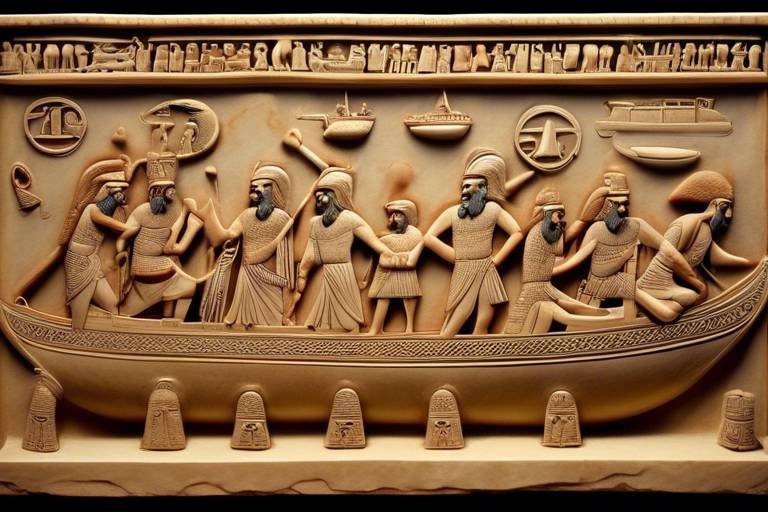The Discovery of the Archaeological Site of Herculaneum
The discovery of the archaeological site of Herculaneum is a fascinating tale that unveils the secrets of an ancient Roman city frozen in time by the catastrophic eruption of Mount Vesuvius. The journey begins with the accidental rediscovery of Herculaneum in the 18th century, sparking a wave of excitement and curiosity among scholars, archaeologists, and history enthusiasts worldwide.
As the excavations unfolded, the buried city slowly revealed its well-preserved ruins, offering a glimpse into the daily lives of its inhabitants and the vibrant culture that thrived within its walls. The painstaking process of unearthing Herculaneum's treasures brought to light a wealth of artifacts, artworks, and architectural marvels that continue to captivate visitors to this day.
The archaeological site of Herculaneum stands as a testament to the power of nature and the resilience of human civilization in the face of sudden tragedy. Exploring its streets, houses, and public buildings is like stepping back in time, experiencing firsthand the grandeur and tragedy of a lost world waiting to be rediscovered.
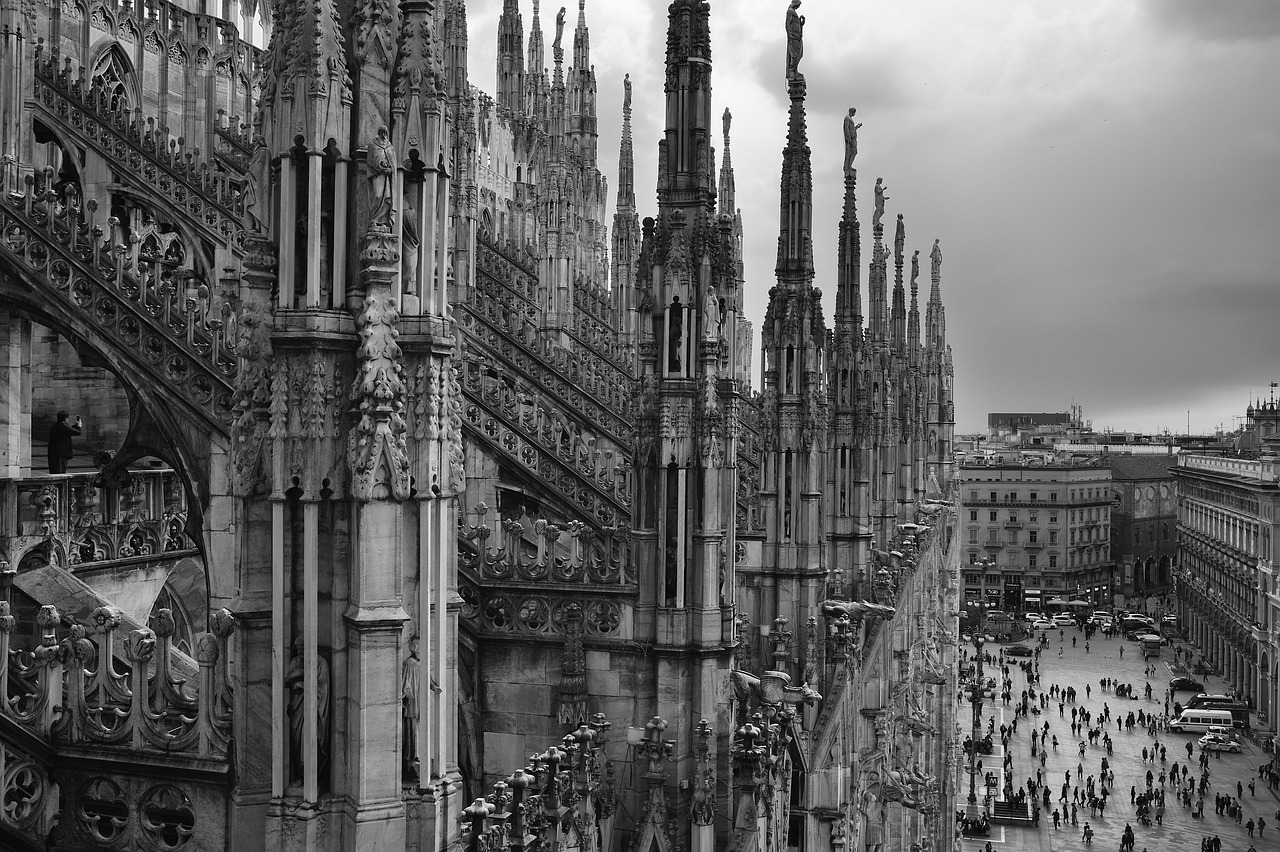
History of Herculaneum
The history of Herculaneum is a fascinating tale of a thriving ancient city that met a tragic fate. Founded by the Greeks in the 6th century BC, Herculaneum flourished as a prosperous Roman town located near the Bay of Naples. Over the centuries, it became a bustling hub of trade and culture, attracting wealthy residents who built luxurious villas along its picturesque coastline.
However, the city's prosperity was abruptly halted in 79 AD when Mount Vesuvius erupted, burying Herculaneum under a thick layer of volcanic ash and mud. This catastrophic event preserved the city in a remarkable state, offering modern archaeologists a unique glimpse into the daily lives of its inhabitants and the architectural marvels of the time.
Excavations of Herculaneum began in the 18th century, uncovering a wealth of well-preserved buildings, intricate frescoes, and valuable artifacts that shed light on the city's affluent past. The meticulous excavation process continues to this day, revealing new insights into the ancient world and captivating visitors from around the globe.
One of the most significant discoveries in Herculaneum is the Villa of the Papyri, a luxurious estate adorned with exquisite sculptures and an extensive library of papyrus scrolls. This grand villa provides a glimpse into the sophisticated tastes and intellectual pursuits of the city's elite residents, showcasing the wealth and cultural richness of Herculaneum.
Despite facing numerous preservation challenges due to exposure to the elements and ongoing decay, Herculaneum remains a remarkable archaeological site that continues to inspire awe and wonder. The efforts to protect and conserve this ancient city are vital in ensuring that future generations can appreciate its historical significance and cultural legacy.
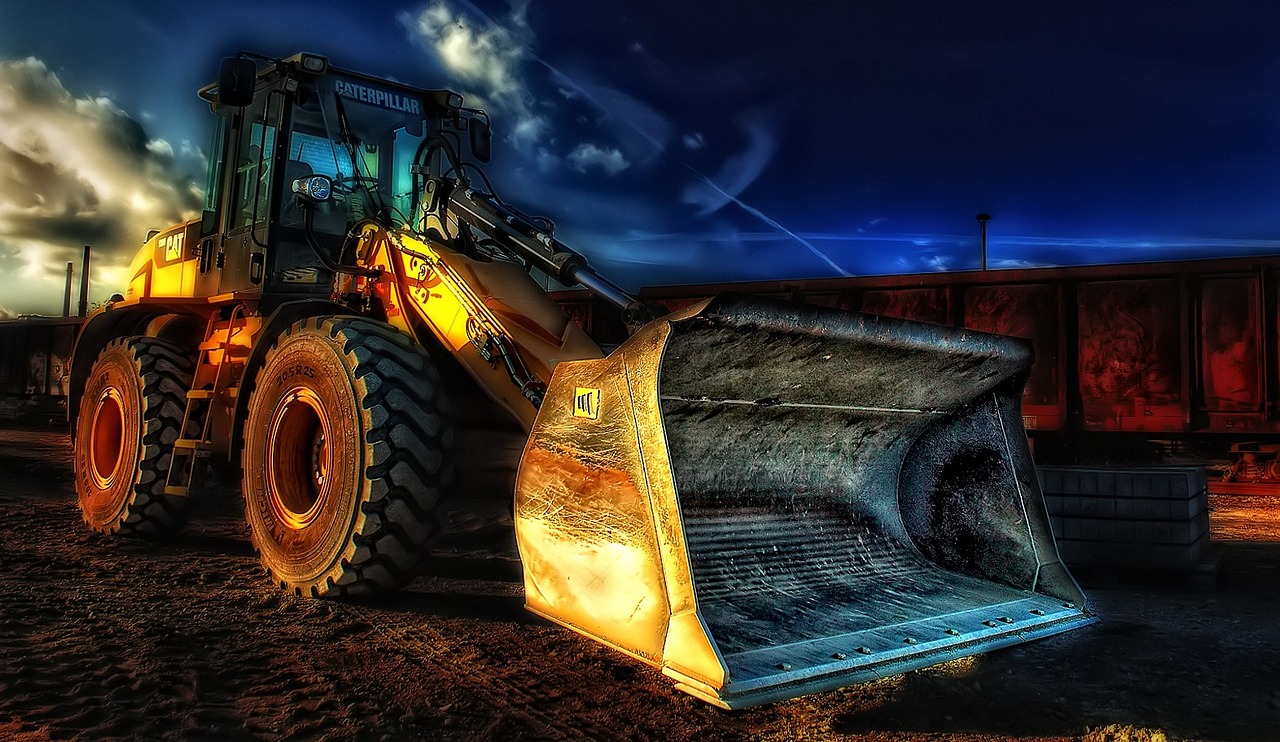
Excavation Process
The excavation process of Herculaneum is a fascinating journey through time, uncovering the secrets of this ancient city buried beneath layers of volcanic ash. The painstaking efforts of archaeologists and historians have revealed a wealth of information about the daily life and culture of the inhabitants before the catastrophic eruption of Mount Vesuvius in 79 AD.
Imagine the scene as archaeologists carefully brush away the debris, revealing perfectly preserved buildings, intricate frescoes, and everyday objects frozen in time. Each discovery is like a piece of a puzzle, helping us reconstruct the vibrant society that once thrived in Herculaneum.
One of the remarkable aspects of the excavation process is the meticulous attention to detail in documenting and preserving each artifact and structure. From ancient pottery to stunning statues, every find provides valuable insights into the artistry, craftsmanship, and beliefs of the ancient Romans.
Archaeologists use a combination of traditional excavation methods and modern technologies to uncover and analyze the ruins of Herculaneum. The use of ground-penetrating radar, 3D mapping, and digital reconstruction techniques has revolutionized our understanding of this ancient city and its tragic fate.
As the excavation continues, new discoveries continue to shed light on the daily life, architecture, and cultural practices of the inhabitants of Herculaneum. Each find adds another layer to the rich tapestry of history that is being woven together, offering a glimpse into a world long lost but not forgotten.

Preservation Challenges
Preserving the delicate remains of Herculaneum presents a myriad of challenges due to the unique nature of the site and its vulnerability to environmental factors. The main challenge lies in protecting the excavated structures and artifacts from deterioration caused by exposure to air, light, humidity, and other elements. The volcanic ash that buried the city also acts as a protective layer, but once exposed, the ruins require meticulous care to prevent decay.
One of the significant preservation challenges is the threat of water damage, as Herculaneum is located near the sea, making it susceptible to moisture infiltration. To combat this, drainage systems and protective coverings have been installed to divert water away from the site and prevent erosion of the ancient structures.
The ongoing battle against vegetation growth is another pressing issue faced by conservationists. Plant roots can infiltrate the fragile ruins, causing cracks and destabilizing the structures. Regular maintenance and monitoring are essential to control plant growth and protect the integrity of the archaeological site.
Furthermore, the impact of tourism on the preservation of Herculaneum cannot be overlooked. The influx of visitors brings both opportunities and challenges, as foot traffic, handling of artifacts, and environmental changes due to increased human presence can all contribute to the deterioration of the site. Balancing accessibility for tourists with the need for conservation efforts is a delicate task that requires careful planning and management.
Innovative conservation techniques, such as the use of non-invasive technologies and sustainable materials, are being employed to address the preservation challenges faced by Herculaneum. Collaborative efforts between archaeologists, conservationists, and local authorities play a crucial role in safeguarding this ancient marvel for future generations to appreciate and study.

Life in Herculaneum
Life in Herculaneum was a vibrant tapestry of ancient Roman society, bustling with activity and rich in culture. The city, nestled near the Bay of Naples, was a hub of commerce and leisure, offering its residents a life filled with both challenges and pleasures.
The inhabitants of Herculaneum, known for their industrious nature, engaged in various occupations such as farming, fishing, and trade. The city's proximity to the sea facilitated maritime activities, with fishing playing a crucial role in the daily sustenance of the population.
Family life was central to the social fabric of Herculaneum, with households typically comprising multiple generations living together. The community bonds were strong, and communal spaces like the public baths and forums served as gathering points for social interactions and discussions.
The city's cultural scene thrived with theaters, temples, and public squares, where residents gathered for entertainment, religious ceremonies, and political events. The arts flourished in Herculaneum, evident in the exquisite frescoes adorning the walls of affluent homes and public buildings.
Education was valued in Herculaneum, with schools catering to children of all social classes. The pursuit of knowledge and intellectual discourse was highly regarded, reflecting the city's intellectual curiosity and thirst for learning.
Despite the bustling urban life, moments of tranquility could be found in the lush gardens and courtyards of Herculaneum's residences. The city's well-planned layout, complete with narrow streets and spacious villas, offered a harmonious blend of urban convenience and natural beauty.
As Vesuvius loomed ominously in the distance, the residents of Herculaneum could not have foreseen the catastrophic fate that awaited them. The eruption of 79 AD, which buried the city in volcanic ash and pumice, froze its vibrant life in time, leaving behind a poignant reminder of the fragility of human existence.
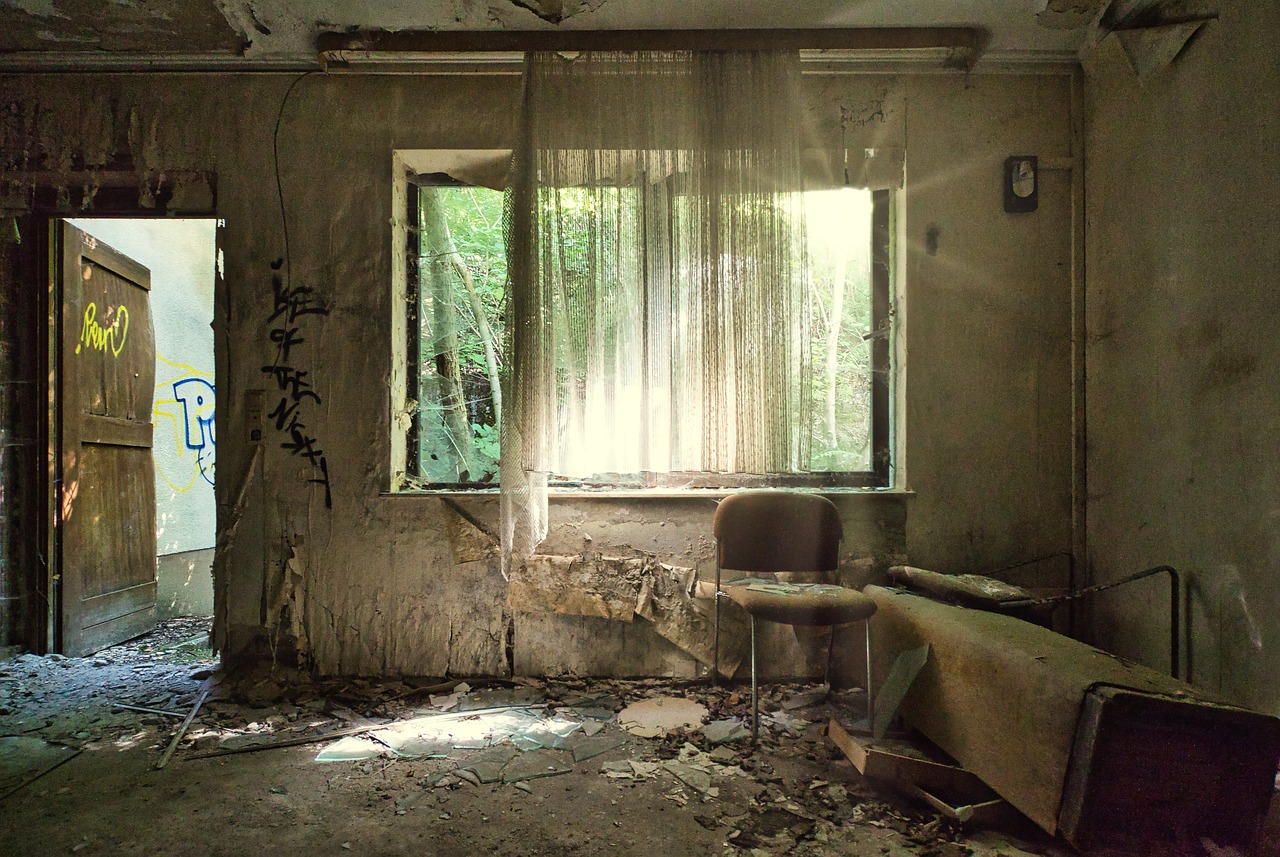
Architectural Marvels
When it comes to architectural marvels, Herculaneum stands out as a testament to the ingenuity and craftsmanship of the ancient Romans. The city boasts a wealth of well-preserved buildings that offer a glimpse into the daily lives of its inhabitants. One of the most striking features of Herculaneum is its intricate mosaics, which adorn many of the floors in the houses and public buildings. These colorful and detailed designs showcase the artistic skill and attention to detail of the craftsmen of that era.
Furthermore, the urban layout of Herculaneum is a marvel in itself. The city was meticulously planned, with wide streets, public squares, and an advanced drainage system. The architecture of Herculaneum reflects a blend of Roman and Greek influences, creating a unique aesthetic that sets it apart from other ancient cities.
One of the most iconic structures in Herculaneum is the Villa of the Papyri, a luxurious seaside villa that housed a vast collection of ancient scrolls. This grand villa features stunning frescoes, elaborate gardens, and a sprawling layout that speaks to the wealth and sophistication of its owners.
Exploring the architectural marvels of Herculaneum is like stepping back in time and witnessing the grandeur of a bygone era. The well-preserved buildings, intricate mosaics, and urban planning of the city offer a glimpse into the lives of its ancient inhabitants, showcasing their creativity, engineering prowess, and artistic sensibilities.
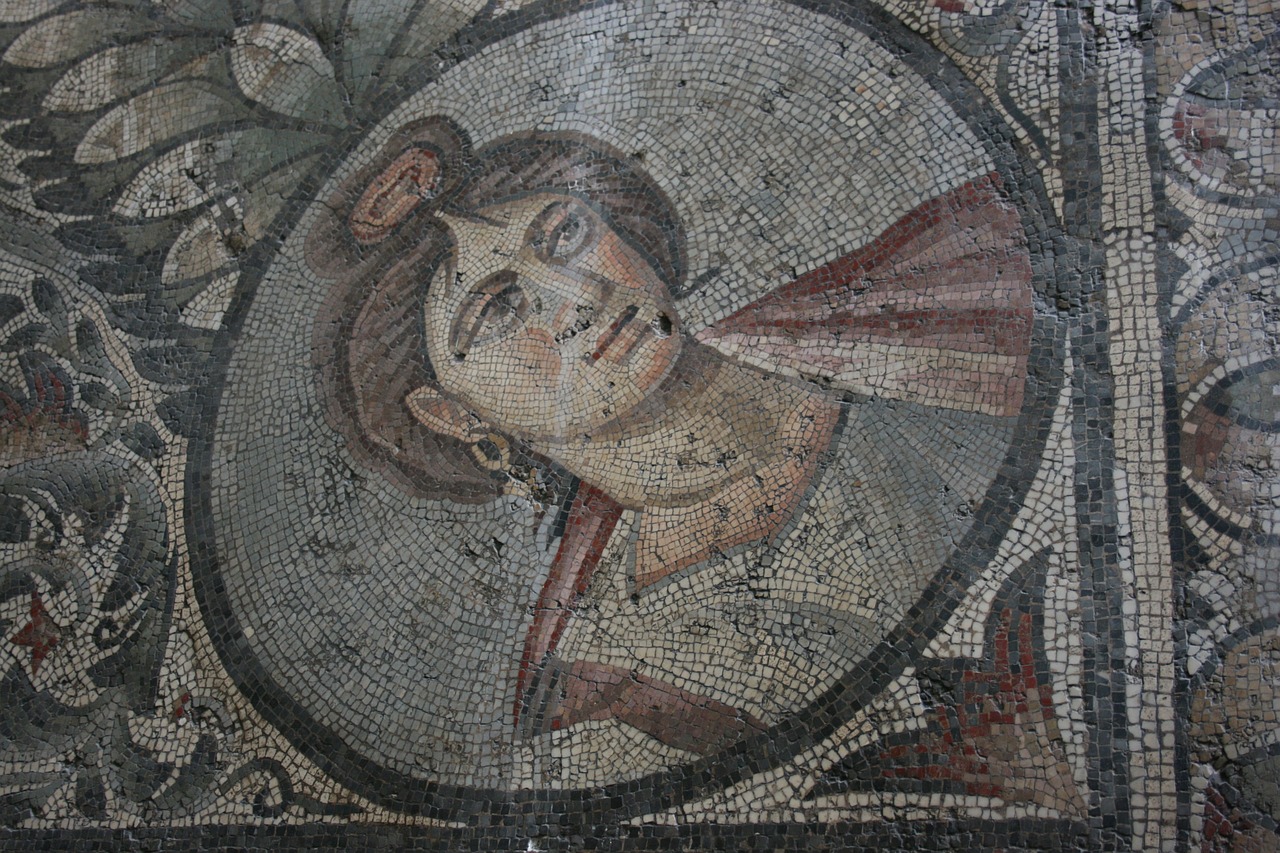
Artifacts and Treasures
Exploring the archaeological site of Herculaneum unveils a treasure trove of artifacts that offer a glimpse into the daily lives and rich culture of its ancient inhabitants. The excavation efforts have unearthed a diverse range of items, from household objects to exquisite artworks, providing valuable insights into the craftsmanship and beliefs of the Roman era.
One of the most striking features of Herculaneum's artifacts is the exquisite preservation of organic materials due to the city's burial under layers of volcanic ash. Visitors can marvel at delicate wooden furniture, well-preserved textiles, and even food items that have survived the test of time, offering a rare opportunity to connect with the past in a tangible way.
The collection of artifacts at Herculaneum also includes intricate mosaics, colorful frescoes, and statues that reflect the artistic sophistication of the ancient Romans. These masterpieces adorn the walls and floors of the city's buildings, showcasing the skill and creativity of the craftsmen who once called Herculaneum home.
Moreover, the discovery of personal belongings such as jewelry, coins, and household utensils provides a more intimate look into the daily routines and social customs of Herculaneum's residents. Each artifact tells a story, shedding light on the interconnected lives of individuals who lived in this thriving ancient city.
Visitors to Herculaneum can witness these treasures up close, immersing themselves in a world frozen in time by the catastrophic eruption of Mount Vesuvius. The artifacts and treasures of Herculaneum not only offer a window into the past but also spark curiosity and wonder, inviting us to contemplate the enduring legacy of this remarkable archaeological site.
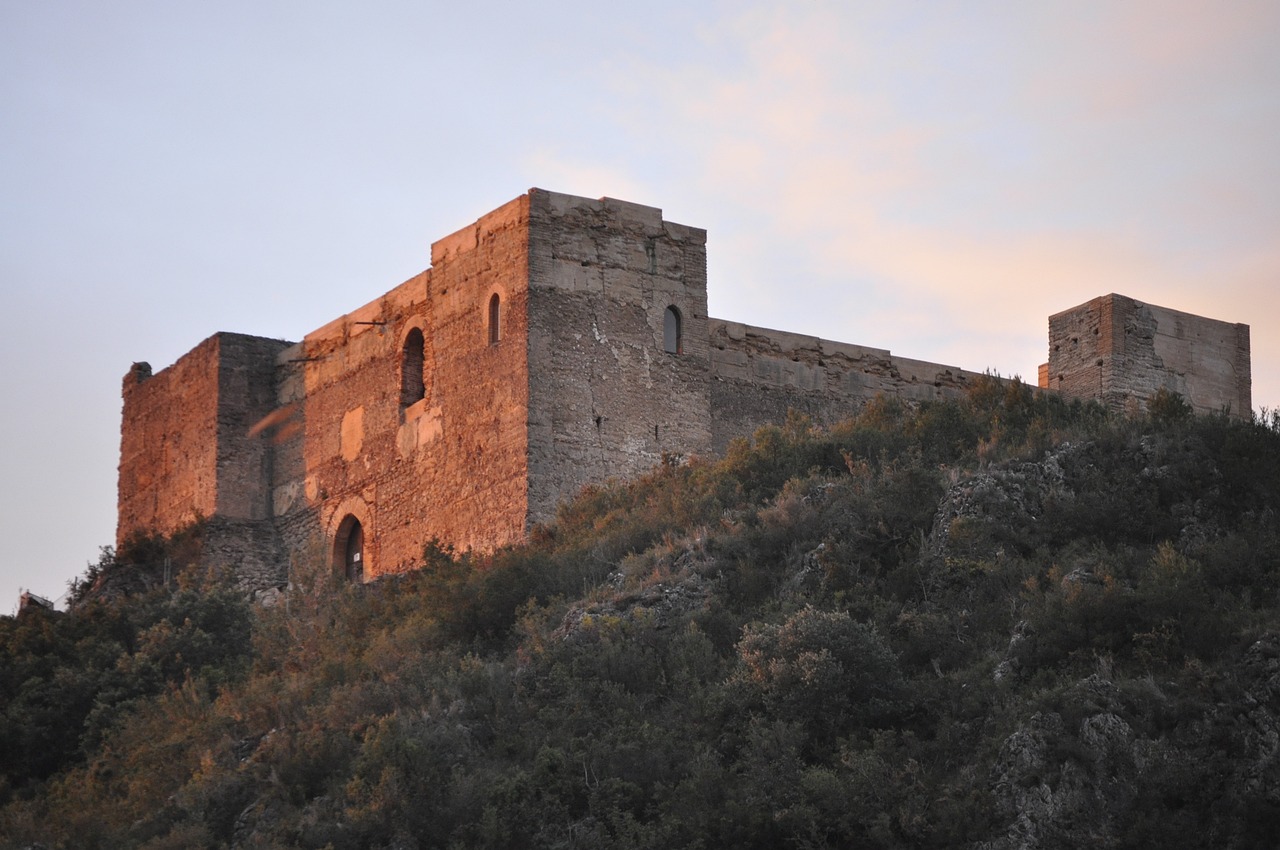
Tourism and Visitor Experience
When it comes to tourism and the visitor experience at the archaeological site of Herculaneum, one can expect a journey back in time like no other. The site offers a unique opportunity to witness the ancient Roman city frozen in the moment of destruction, providing a glimpse into the daily lives of its inhabitants before the catastrophic eruption of Mount Vesuvius.
Upon arrival at Herculaneum, visitors are greeted by the well-preserved ruins of the city, showcasing a remarkable blend of architectural marvels and intricate details that have survived for centuries. The compact layout of the site allows for an immersive experience, where one can wander through the narrow streets, explore the ancient homes, and marvel at the vibrant mosaics that adorn the floors.
Guided tours are available for those seeking a deeper understanding of the site's history and significance. Knowledgeable guides lead visitors through the ruins, providing insights into the daily life, culture, and society of the ancient Herculaneum residents. These tours offer a comprehensive overview of the city's layout, public buildings, and private dwellings, enhancing the overall visitor experience.
For those who prefer a more independent exploration, Herculaneum offers ample opportunities to wander at leisure and discover hidden gems around every corner. The site's peaceful atmosphere and well-preserved structures create a sense of stepping back in time, allowing visitors to connect with the past in a profound and meaningful way.
Additionally, interactive exhibits and multimedia displays provide further context and information about the history and excavation of Herculaneum, enriching the visitor experience and deepening their appreciation for this ancient treasure trove. The site's proximity to the bustling city of Naples also makes it a convenient and accessible destination for travelers seeking to immerse themselves in the rich history of the region.
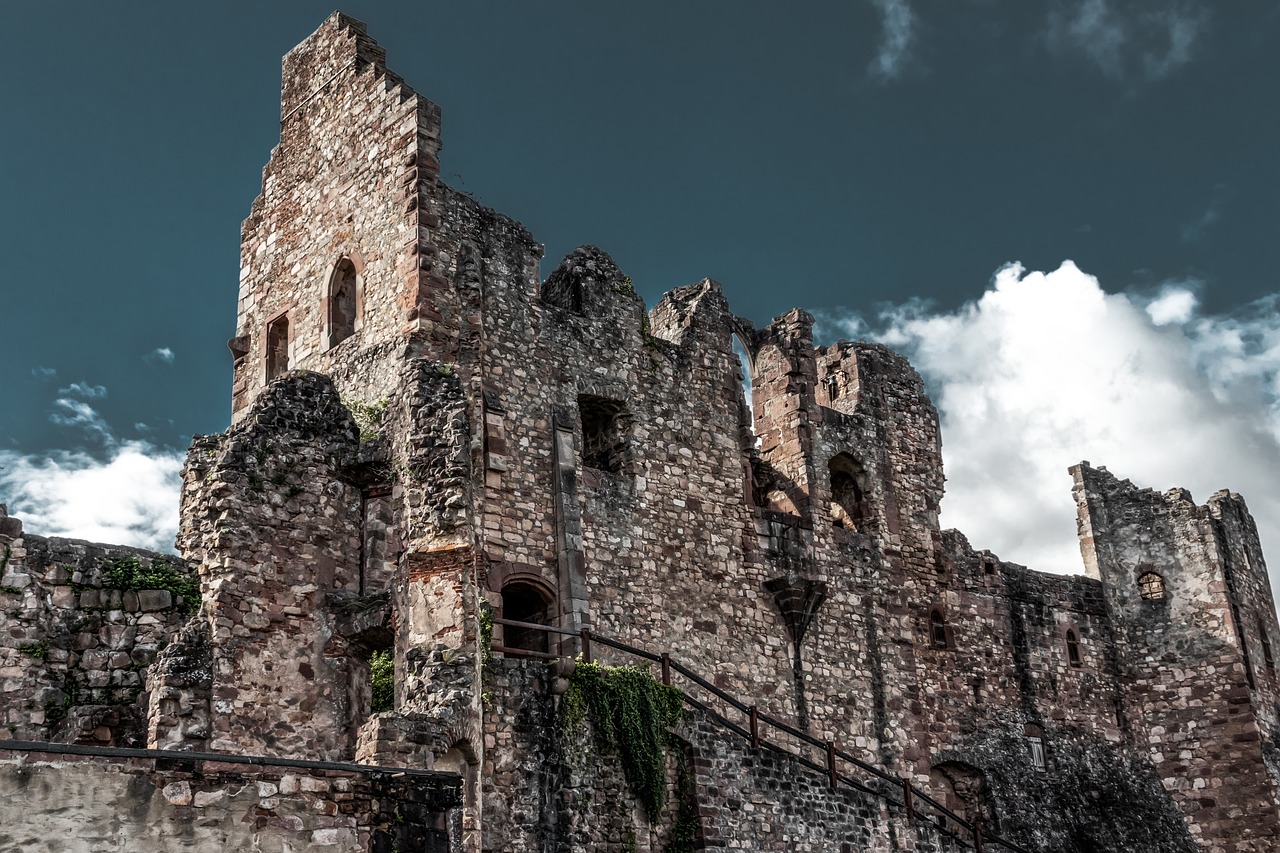
Comparison with Pompeii
When comparing the archaeological findings and historical significance of Herculaneum with its more famous neighbor, Pompeii, fascinating insights into the ancient Roman world emerge. While both cities were tragically buried by the eruption of Mount Vesuvius in 79 AD, they offer distinct perspectives on Roman life and culture.
Herculaneum, although smaller in size compared to Pompeii, provides a more intimate view of daily life in ancient Rome. The preservation of wooden structures and organic materials at Herculaneum, due to the unique pyroclastic flow that engulfed the city, offers a different glimpse into the past. The affluent nature of the city is evident in the luxurious villas and elaborate frescoes that have survived the centuries.
On the other hand, Pompeii, with its larger area and diverse population, showcases a bustling commercial center and a more varied social structure. The city's amphitheater, forum, and public baths highlight the communal aspects of Roman society, while the graffiti and inscriptions provide a glimpse into the daily interactions of the inhabitants.
While Herculaneum's artifacts emphasize the elite class and their opulent lifestyle, Pompeii's findings reflect a broader spectrum of society, from the wealthy merchants to the common laborers. The differences in architectural styles, artistic motifs, and urban planning between the two cities further enrich our understanding of ancient Roman civilization.
Visiting both Herculaneum and Pompeii allows travelers to appreciate the nuances of Roman life and witness the diverse influences that shaped these thriving cities before their sudden demise. Each site offers a unique narrative of the past, inviting visitors to explore the layers of history buried beneath the volcanic ash.
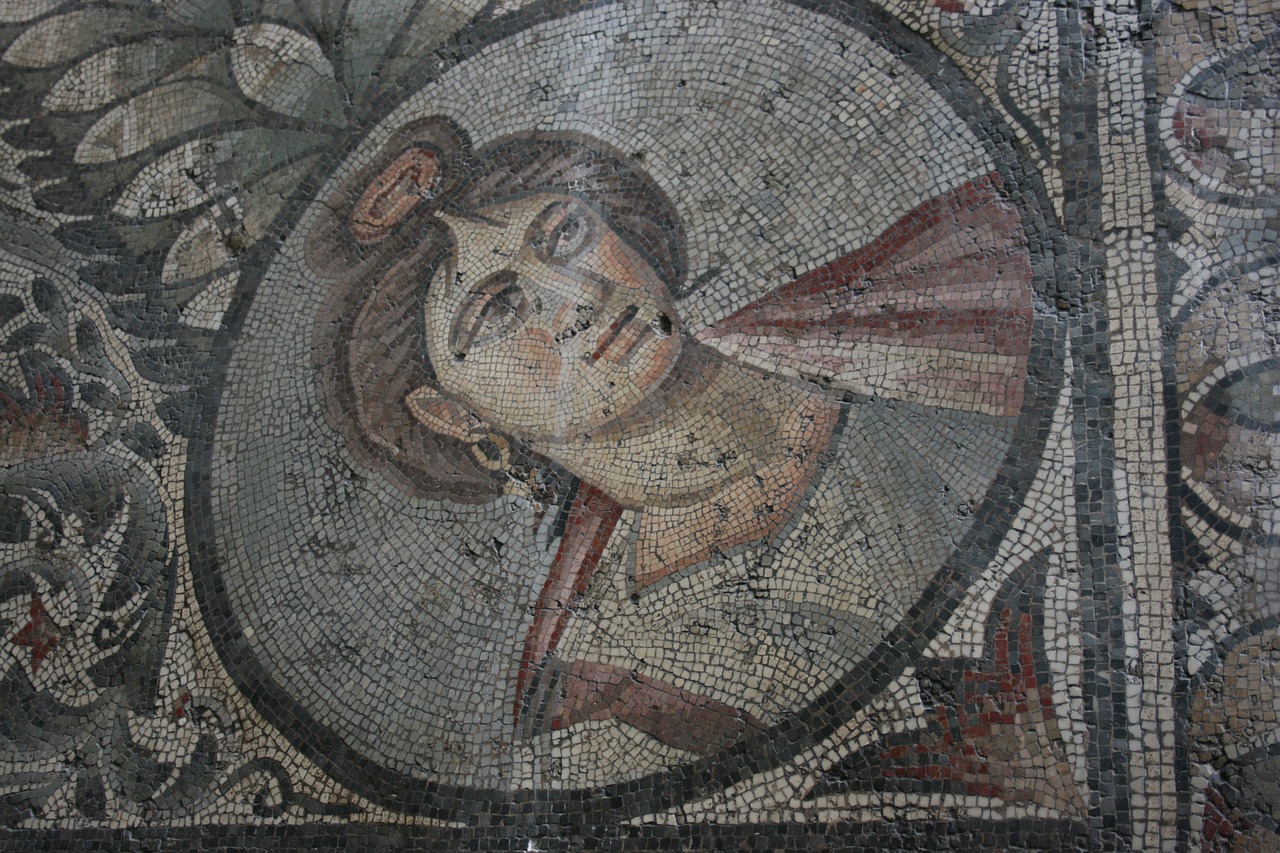
Legacy and Cultural Impact
As the sun sets over the ancient ruins of Herculaneum, the legacy of this once-thriving city continues to reverberate through time, leaving an indelible mark on our understanding of ancient Roman civilization. The cultural impact of Herculaneum extends far beyond its archaeological remains, shaping modern perceptions of history, art, and society.
One of the most significant aspects of Herculaneum's legacy is its role in preserving a snapshot of daily life in ancient Rome. The well-preserved buildings, intricate mosaics, and artifacts unearthed at the site offer a glimpse into the lives of the city's inhabitants, providing valuable insights into their customs, beliefs, and social structures.
Furthermore, the excavation and preservation efforts at Herculaneum have sparked a renewed interest in archaeology and historical preservation. Scholars and researchers continue to study the site, uncovering new discoveries and deepening our knowledge of the ancient world.
The cultural impact of Herculaneum also extends to the realm of art and architecture. The exquisite frescoes, statues, and decorative elements found at the site have inspired artists and designers for centuries, influencing styles and trends in various artistic disciplines.
Moreover, Herculaneum's legacy serves as a poignant reminder of the power and unpredictability of nature. The catastrophic eruption of Mount Vesuvius in 79 AD not only preserved the city in ash but also serves as a cautionary tale about the fragility of human civilization in the face of natural disasters.
In conclusion, the legacy and cultural impact of Herculaneum are profound and enduring, enriching our understanding of the past and inspiring future generations to explore the depths of history. The echoes of this ancient city continue to resonate, inviting us to reflect on the interconnectedness of the past, present, and future.
Frequently Asked Questions
- What is the history behind the archaeological site of Herculaneum?
Herculaneum was an ancient Roman town destroyed and buried by the eruption of Mount Vesuvius in 79 AD. It was rediscovered in the 18th century, providing valuable insights into Roman daily life and culture.
- How was Herculaneum excavated?
The excavation process of Herculaneum involved uncovering the city's ruins layer by layer, revealing well-preserved buildings, artifacts, and mosaics. Archaeologists used meticulous techniques to carefully extract and preserve the site's treasures.
- What are some of the challenges faced in preserving Herculaneum?
Preserving Herculaneum poses unique challenges due to its delicate state and exposure to environmental factors. Conservation efforts focus on stabilizing structures, protecting artifacts, and preventing further decay.
- How does Herculaneum differ from Pompeii?
While both Herculaneum and Pompeii were ancient Roman cities destroyed by Vesuvius, Herculaneum is smaller and better preserved. Pompeii is more famous but suffered greater damage from the eruption.
- What can visitors expect when exploring Herculaneum today?
Visitors to Herculaneum can experience a well-preserved glimpse into ancient Roman life, walking through streets, houses, and public buildings frozen in time. Guided tours and educational exhibits enhance the visitor experience.















